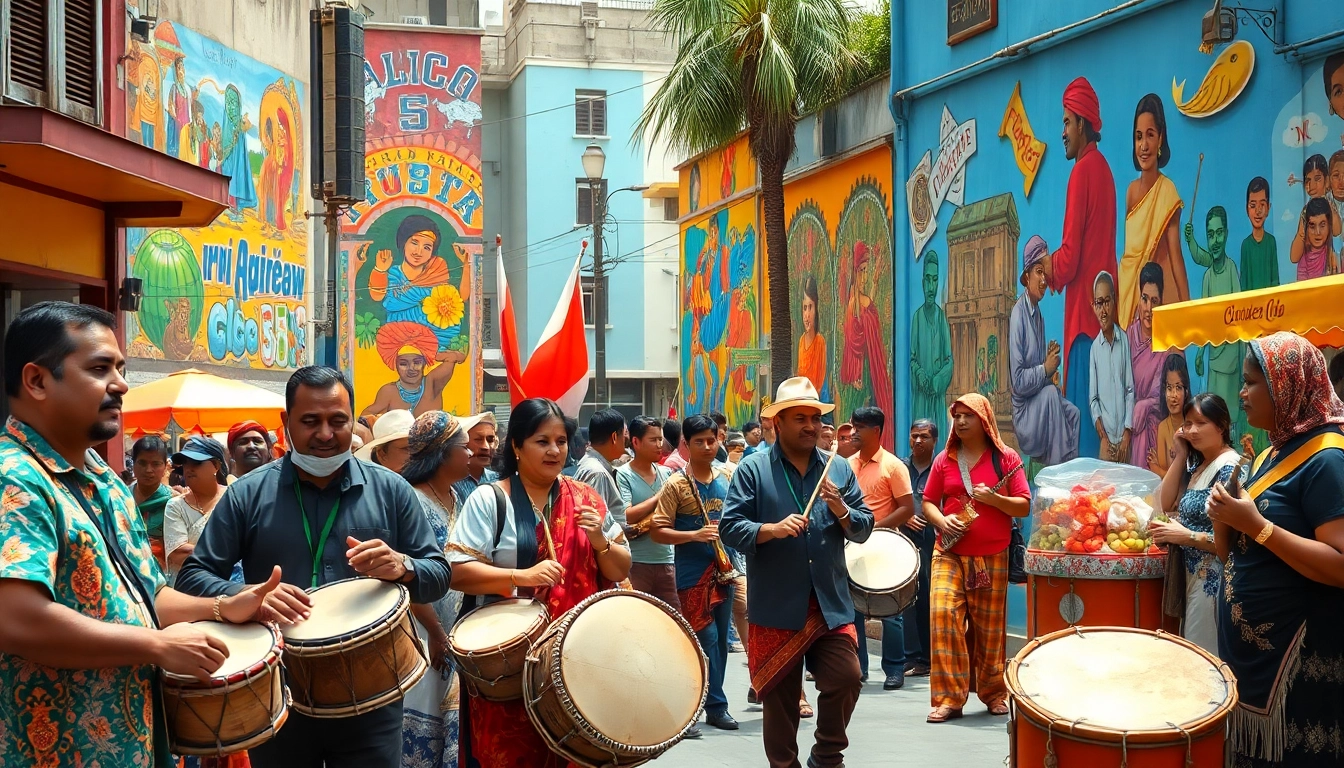Understanding Live Stream Fundamentals
What is Live Streaming?
Live streaming refers to the continuous transmission of video and audio content over the internet in real time. Unlike traditional video formats that require recording and then uploading, live streaming delivers content as it happens, allowing audiences to watch events, webinars, and performances as they unfold. This technology uses various platforms and tools to transmit the video feed, enabling simultaneous interaction between the broadcaster and the viewers. Given today’s digital landscape, platforms like Live Stream have become essential for businesses, influencers, and content creators aiming to engage directly with their audiences and build community around their content.
Key Benefits of Live Stream
Implementing live streaming in your content strategy provides numerous advantages:
- Real-Time Interaction: Live streaming allows for immediate feedback via comments and reactions, creating a dynamic interaction that pre-recorded content cannot offer.
- Increased Reach: Unlike limited physical attendance at events, live streams can be attended by anyone with internet access, significantly broadening your audience reach.
- Cost-Effective Engagement: Events can be hosted online at a fraction of the cost associated with in-person gatherings, making high-quality content accessible to a larger audience.
- Authenticity and Connection: Live content conveys a sense of immediacy and genuine interaction, which can enhance trust and connection with your audience.
- Content Longevity: Live streams can be recorded and reused later as on-demand content, allowing you to extract additional value from your live broadcasts.
Types of Live Streaming Content
Understanding the different types of content that can be delivered through live streaming is crucial for crafting valuable experiences for your audience. Here are the main categories:
- Events: This includes live concerts, conferences, and sports events, where the goal is to engage a viewer audience in real-time.
- Webinars: These are educational or informative live streams aimed at providing insights on specific topics. They often incorporate interactivity to engage viewers.
- Gaming Streams: Platforms like Twitch have popularized this type, where gamers share their gameplay live while interacting with their audience.
- Live Q&As: A format that facilitates direct interaction between presenters and audiences, allowing for questions and answers in real-time.
- Product Launches: Brands often use live streaming for unveiling new products, providing insights directly from their teams.
Choosing the Right Tools for Your Live Stream
Essential Equipment for High-Quality Live Streams
Achieving high-quality streaming requires appropriate equipment. Below are essential tools you should consider:
- Cameras: A high-definition camera is vital. Consider using DSLR or mirrorless cameras for superior image quality over standard webcams.
- Audio Equipment: Clear audio is crucial, so invest in quality microphones. Shotgun microphones or lavalier mics can significantly enhance sound quality.
- Lighting: Proper lighting is essential to enhance video quality. Ring lights and softboxes can help improve visibility and reduce shadows.
- Streaming Software: Software like OBS Studio, Streamlabs, or Wirecast allows you to manage your stream, switch between scenes, and overlay graphics.
Best Streaming Platforms Compared
When selecting a streaming platform, it’s essential to compare features based on your specific needs. Here’s a look at some popular platforms:
| Platform | Best For | Key Features |
|---|---|---|
| Vimeo Live | Professional streams | Customizable player, advanced analytics, and privacy settings. |
| YouTube Live | Wide audience reach | Massive audience base, integration with Google services, and monetization options. |
| Twitch | Gamers and creatives | Interactive chat features and a strong community engagement. |
| Facebook Live | Social media reach | Easy integration with Facebook’s user base and tools for engagement. |
| StreamYard | Ease of use | Simple interface, multi-platform streaming, and branding options. |
Software Solutions for Seamless Streaming
Choosing the right software can significantly enhance your streaming experience. Here are the top contenders:
- Open Broadcaster Software (OBS): A free and open-source solution, OBS is highly customizable and ideal for both beginners and professionals.
- Wirecast: A paid solution offering advanced features, perfect for professionals needing comprehensive broadcasting tools.
- Streamlabs: Tailored for gamers but versatile for all types, Streamlabs provides user-friendly tools and integrations (like alerts and overlays).
- Zoom: Initially a conferencing tool, Zoom has become a preferred platform for webinars and virtual events, offering easy interaction and recording features.
Best Practices for Successful Live Streams
Planning Your Live Stream Content
A well-structured live stream necessitates precise planning. Here are steps to ensure you effectively prepare your content:
- Define Your Goals: Clarify what you aim to accomplish. Whether it’s engagement, education, or entertainment, having clear objectives guides your content creation.
- Craft a Compelling Script: While spontaneity is key, having an outline or script ensures you cover all necessary points while maintaining a natural flow.
- Rehearse: Conduct a trial run to practice your delivery and troubleshoot any technical issues that may arise.
- Promote the Event: Utilize your social media, email newsletters, and website to create buzz around your upcoming live stream.
Engaging Your Audience During the Stream
Keeping your audience engaged in a live stream can be challenging but is crucial for a successful experience. Utilize these strategies:
- Use Interactive Tools: Incorporate polls, quizzes, and Q&A sessions to encourage interaction and viewer participation.
- Respond to Comments: Actively engage with live comments. Acknowledging viewer input fosters a feeling of community.
- Maintain Energy Levels: Your enthusiasm will inspire viewers, so work to keep the energy high while presenting.
- Share Visuals: Be it slides or real-time content demonstration, visuals can enhance understanding and retention.
Analyzing Performance Metrics Post-Stream
Post-event analysis is critical to understand the effectiveness of your live stream. Monitor these key performance metrics:
- Viewer Count: Track peak live viewers and average audience retention to evaluate interest levels.
- Engagement Rate: Analyze the number of comments, reactions, and shares during your live stream to assess viewer involvement.
- Conversion Metrics: If you had specific calls to action, evaluate how many viewers took advantage of those points.
- Feedback: Solicit viewer feedback through surveys post-stream to gather insights on what worked and what didn’t.
Advanced Techniques for Professional-Level Live Streaming
Optimizing Stream Quality and Connectivity
To ensure a high-quality streaming experience, focus on these optimization techniques:
- Stable Internet Connection: A wired connection is preferred over Wi-Fi for stability and speed. Test your upload speed ahead of time.
- Adjusting Bitrate: Depending on your audience’s internet speed, adjust your streaming bitrate to balance quality and buffering.
- Use a CDN: Content Delivery Networks (CDN) can minimize latency and improve stream quality by delivering your content from geographically closer servers.
- Regularly Update Equipment: Ensure all hardware and software are up-to-date to avoid unplanned issues during streaming.
Incorporating Interactive Elements
Enhance your streams with features that allow audience interaction:
- Live Polls and Questions: Integrating live polls to gauge audience preferences or questions keeps viewers engaged.
- Guest Appearances: Invite guests to your stream for discussions, diversifying the content and inviting varied audiences.
- Real-Time Challenges: Engage viewers with challenges during the stream that they can participate in, amplifying interest and interaction.
Branding Strategies for Live Streams
To build a strong brand presence during your streams, implement these strategies:
- Consistent Visual Identity: Use your branding elements (logos, colors) in your stream visuals to maintain consistency.
- Clear Messaging: Reinforce your brand message throughout the stream, effectively communicating your values and mission.
- Post-Stream Branding: Follow up with branded content, share highlights, and engage viewers on social media to reinforce your branding beyond the live event.
Sustaining Audience Engagement Beyond the Live Stream
Repurposing Live Stream Content
Maximize the value of your live streams by repurposing content:
- Creating Highlight Reels: Edit and compile key moments into short clips that can be shared across social platforms.
- On-Demand Viewing: Make full recordings available for viewers who missed the live event, enabling ongoing engagement.
- Blog Posts and Guides: Transform your live stream content into written format, offering value to those who prefer reading.
Building Community Around Your Streams
Creating a community fosters loyalty among your audience:
- Social Media Groups: Form dedicated spaces where viewers can interact and discuss topics related to your streams.
- Engage Post-Stream: Continue conversations started in your live events by responding to comments and encouraging ongoing dialogue.
- Exclusive Content: Offer community members further insights or sneak peeks into future content to foster a sense of belonging.
Feedback and Iteration for Future Streams
Feedback is a cornerstone of digital content improvement:
- Gather Viewer Feedback: Use surveys and comments to garner insights on what viewers liked and what could be improved.
- Iterate Your Strategy: Adapt your streaming strategies based on viewer preferences and performance metrics to ensure growth.
- Experiment with New Content: Test different formats and styles to see what resonates with audiences, ensuring ongoing interest.













Leave a Reply